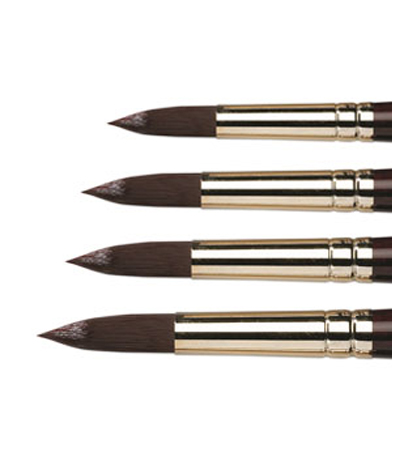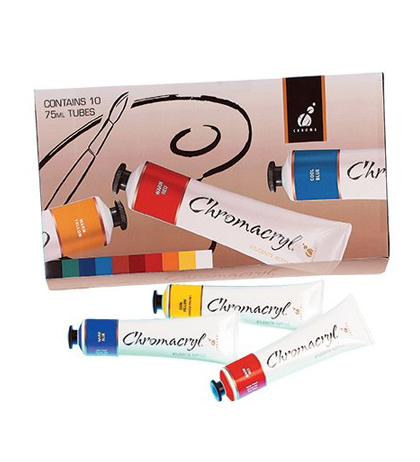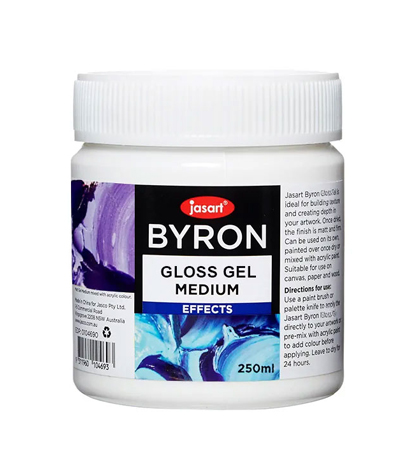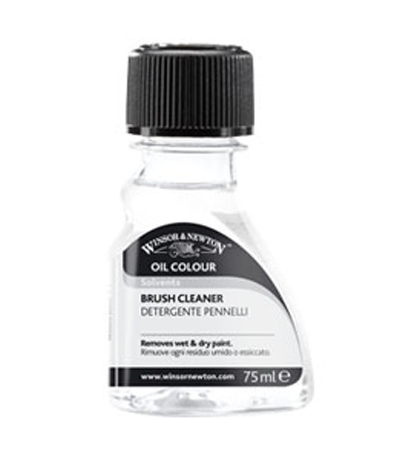The Pros and Cons of Working with Acrylic Paint
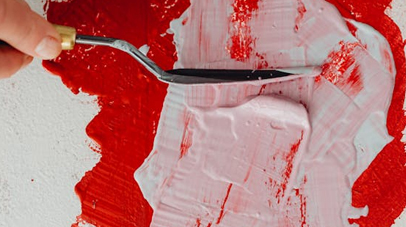
Acrylic paint was first developed in the 1950s as house paint, and made commercially available as artist grade paint in the 1960s. Since then, it’s become a primary art material for a number of contemporary artists.
Acrylic paint is a very recent discovery in the art world when compared to oil paints and watercolours. Its versatile nature, vibrancy and stability has meant it has taken the art world by storm. The more artists take advantage of the wide range of approaches that acrylic paints offer, the more acrylic paint products come to market.
Want to know more about acrylic paint? Here we break down what it is, as well as its pros and cons…
What is acrylic paint?
Acrylic paint is paint made of pigment that’s suspended in acrylic emulation. It is water-soluble and fast-drying and becomes water-resistant once dry.
Acrylic paint is extremely versatile. Dependant on how much the paint is diluted with water, or modified with acrylic gels, mediums or pastes, a finished acrylic painting can resemble a watercolour, gouache or an oil painting. It can also have its own unique characteristics not attainable with other media.
What makes acrylic paint different?
Before the 19th century, artists mixed their own paints. This allowed them to achieve their desired colour and thickness, and to control the use of fillers, if any. With acrylic, hand mixing is generally not practical. This is because of fast drying time and other technical issues, such as the necessity to combine several polymers, as well as surfactants, plasticizers, demoamers and stabilisers. Instead, artists purchase acrylic paint ready to go, which can be modified using acrylic mediums or water.
The range of acrylic mediums is also greater than watercolour and oil. Acrylics have the ability to bond to many different surfaces, and mediums can be used to modify its binding characteristics. Acrylics can be used on paper, canvas and a range of other materials, including hobby models like trains, cars and houses.
Traditional vs modern acrylic paint
Despite acrylic paint being relatively new in the art world, there is still what’s referred to as ‘traditional’ acrylic paint and ‘modern’ acrylic paint. Traditional acrylic paints are the fast-drying paints that have been around for the last five decades and are made from brands such as Liquitex, Winsor and Newton, Golden and Grumbacher. Modern acrylic paints do not dry as quickly and can be reactivated after drying, and are made from brands such as Golden and Chroma.
Matisse Structure Acrylic Paints 75ml

FROM $8.50
Atelier Interactive Acrylic Paints 80ml
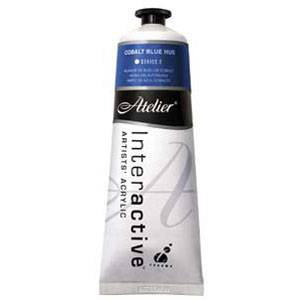
FROM $8.35
Winsor & Newton Professional Acrylic Paints 60ml

FROM $15.90
Liquitex Basics Acrylic Paints 118ml
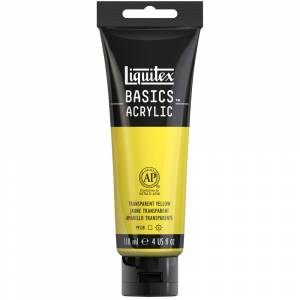
ONLY $13.00
Pros and cons of traditional acrylic paint
Toxicity levels
Advantages: acrylic paints are water-based, which means they can be thinned with just water (no toxic spirits are required). In addition, wet paint can be cleaned off of brushes using just soap and water.
Disadvantages: acrylic paints can contain toxins within their pigments, just like some oil paints do. Additional toxins can be found in acrylics that use ‘retarder’ to slow down the drying time.
Drying time
Advantages: traditional acrylic paints dry rapidly, so there is no need to wait between painting sessions for layers to dry. Paintings are dry enough to ship safely within a day or so.
Disadvantages: because acrylic paints dry quickly they cannot be easily blended to create the ‘wet in wet’ technique that is popular with oil paints. For this reason, a finished acrylic painting can look harsh compared to a finished oil painting.
Reactivation
Advantages: unlike watercolors (another water-based paint), once traditional acrylics are dry they are on the support to stay. This makes painting new layers on top of previous ones simpler.
Disadvantages: once the paint is dry, it cannot be removed or altered.
Durability
Advantages: acrylic paints have been proven to be more flexible than oil paints. There is no need to follow fat over lean rules with acrylics so that they won’t crack.
Disadvantages: we’ve only had 50 years of acrylic paints so we can’t really comment as to how long they’ll hold up for.
Pros and cons of modern acrylic paint
Toxicity Levels
Modern acrylic paints are water-based, which means no toxic spirits are required. Modern acrylics still contain mild levels of toxins, but they don’t use retarder to slow drying time.
Drying time
Advantages: modern acrylic paints have extended drying times, so the paint can be left on a sealed palette and remain workable for several days. Also, wet-in-wet techniques can be used, just like oil paints, without a retarder.
Disadvantages: you’ll need to wait between drying times. If you like your acrylics to dry very quickly, modern acrylic paint won’t.
Reactivation
Advantages: modern acrylic paint reactivates. When water is applied to paint that is dry to the touch it can be reactivated and worked into and/or lifted off.
Disadvantages: over time, the ability to reactivate is eventually lost and painting wet over dry acrylics may cause some color bleed.
Durability
Advantages: it appears that modern acrylic paint is more flexible and durable than oil paints.
Disadvantages: modern acrylic paint is even younger than traditional acrylic paints. Efforts are being made to prove their longevity, but nothing can be irrefutably proven until sufficient time passes.
Weighing up the pros and cons of acrylic paint
Whether you are using traditional acrylic paint or modern acrylic paint, there are pros and cons when compared with other paint mediums.
The pros
- It's versatile. You can paint on any surface that is oil and wax free. This includes canvas, wood, paper, rocks, glass, fabric, cardboard, metal, and plastic. With the proper preparation you can use acrylic paint on almost everything.
- It dries quickly. This allows you to finish your project faster.
- It's water-soluble. You can wash it off your hands and brushes (while they're still wet) with soap and water with no need for paint thinners.
- It's less toxic and safer around children and pets.
- It’s more affordable.
- It’s flexible. You can mix acrylics with lots of different mediums to get different textures, adhering features, or to change the drying time.
- It's durable. As far as we know, acrylics are flexible and won't crack, peel, or turn yellow.
- It’s vibrant.
- It's water-resistant when dry.
The cons
- Its colour becomes darker when dry, so the colour you paint with isn’t necessarily what you’ll end up with.
- It’s fast-drying, meaning you need to work quickly.
- It’s hard to remove from brushes, nails or clothing once dried. It's best to keep a container of water near you while you're painting to keep the brushes wet so they are easy to clean. You should also wear protective clothing.
- It’s hard to remove from nails or clothing once dried.
- It’s considered by some art galleries and collectors as ‘not as valuable’ when compared with other paint mediums.
What to test out the pros and cons of acrylic paints yourself? Check out the huge range of acrylic paint products at Discount Art N Craft Warehouse from brands such as Jo Sonja, Reeves, Matisse, Atelier and Winsor & Newton. If you are unsure on which brand to try, why not check out our handy article on the best acrylic paints.
As a 100% Australian owned online company, we are dedicated to offering the most comprehensive range of online art and craft supplies at the most competitive prices you’ll find. We also offer a wide range of acrylic painting accessories such as acrylic painting brushes, easels for your studio and a huge range of acrylic mediums and varnishes, to help take your acrylic painting to the next level! Shop today.

